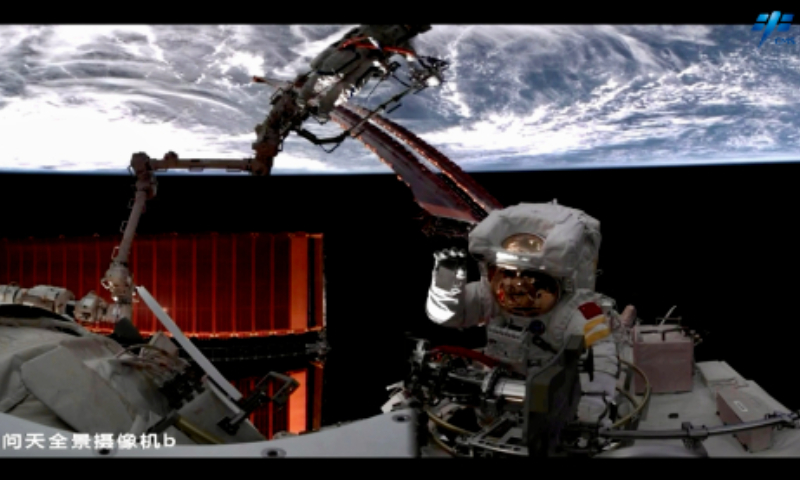China's Shenzhou-16 crew complete first extravehicular activity

Shenzhou-16 crew members Jing Haipeng, Zhu Yangzhu and Gui Haichao successfully completed all the assigned tasks and safely returned to the space research module with the support of the robotic arm after about eight hours of their first extravehicular activity (EVA), the China Manned Space Engineering Office (CMSA) said on Thursday.
During the spacewalk, the astronauts completed tasks including bracket installation and lifting of panorama camera B in the core module and the unlocking and lifting of panorama cameras A and B of the Mengtian lab module.
Jing and Zhu went out for the spacewalk. Zhu has become the first space flight engineer to perform an EVA.
The Shenzhou-16 crew will also carry out a number of space science experiments and conduct multiple EVAs.
The Shenzhou-16 crew is composed of three types of astronauts: commander, flight engineer, and payload expert. They have been in orbit for 51 days since they entered the space station on May 30.
According to the CMSA, the radiation biology exposure experiment is significant for ensuring a healthy long-term stay in orbit for astronauts and promoting China's crewed lunar landing plans.
With the installation of gas cylinders in the electric propulsion system in orbit, this is the first time the "gas exchange" method has been used to complete the replenishment of electric propellants for long-term orbit maintenance of the space station, making its operation more economic and efficient.
The CMSA said the Shenzhou-16 crew are in good condition, and the space station is running stably.
China launched the Shenzhou-16 manned spacecraft on May 30, sending three astronauts to its space station for a five-month mission.